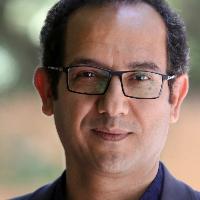Structural studies of TV Animation and exposure method for Animation content analysis
In a very general classification، films can be divided into three groups including fiction، nonfiction (i. e. documentary، experimental….) and animation. Animation، as one major member of the three is a hybrid medium and art form which employs the expressive elements of other arts; that is it hybridizes and utilizes elements of dramatic arts (mainly cinema) and fine arts (painting، graphic design، etc.). Thus it may be said that to study these ‘structural elements’ and utilizing them in an appropriate manner in TV animation production would mediate the ideal effect and message to the viewer. It is possible to group animation productions into three major groups of short experimental animation، feature-length and TV animation. Nowadays، TV animation production comprises the majority of the animation produced in the world since the massive number of TV channels throughout the globe has made such kind of animation highly demanded and marketed. In a very general outlook، it may be said that most TV animations as cheap and fast products have shared properties such as flat perspective، simple color pallets، and simple forms in designing characters as well as limited animation which is mostly mass produced with low budgets. The structural elements of the three different categories of animation mentioned before، while sharing many factors، are different and diverse dependent on the specificities of each medium. Each، have different properties in terms of their scripts، formal structures and so on; visual elements (such as color، form، texture and…) and also other determining factors (such as composition، lighting and so forth)، aural elements (such as music، dialogue، and sound effects) and the animation script properties differ dependent on the type of medium as well as the target audience. This research is based on a hypothesis that ignoring the mentioned ‘structural elements’ as well as not considering the differences، properties and functions of the diverse range of animations would result in the production of weak and inefficient works which will eventually fail to communicate with the target audience or the intended message. Based on structural theories، it is possible to uncover the ‘message’ and significations of a work by creating practical relationships among its structural elements. Thus it is possible to consider a film and its narrative as a ‘structure’ or in other words، a specific way to synthesize the building blocks to create a coherent whole. In this research، the theories of Bordwell and Thompson، Esslin، Furniss and others who have proposed theoretical models to study and deconstruct structural elements of a dramatic text based on the concept of mise-en-scene are used to create a new method with consideration of novel relations to come to a comprehensive model by which to analyze animation texts، especially to examine the structural elements of TV animation productions. To reach such a model، the structural elements are divided into the structural/expressive elements specific to animation، dramatic text (screenplay)، visual design، sound design، and structural elements of editing، and the properties of each will be studied in depth in the paper.
- حق عضویت دریافتی صرف حمایت از نشریات عضو و نگهداری، تکمیل و توسعه مگیران میشود.
- پرداخت حق اشتراک و دانلود مقالات اجازه بازنشر آن در سایر رسانههای چاپی و دیجیتال را به کاربر نمیدهد.



